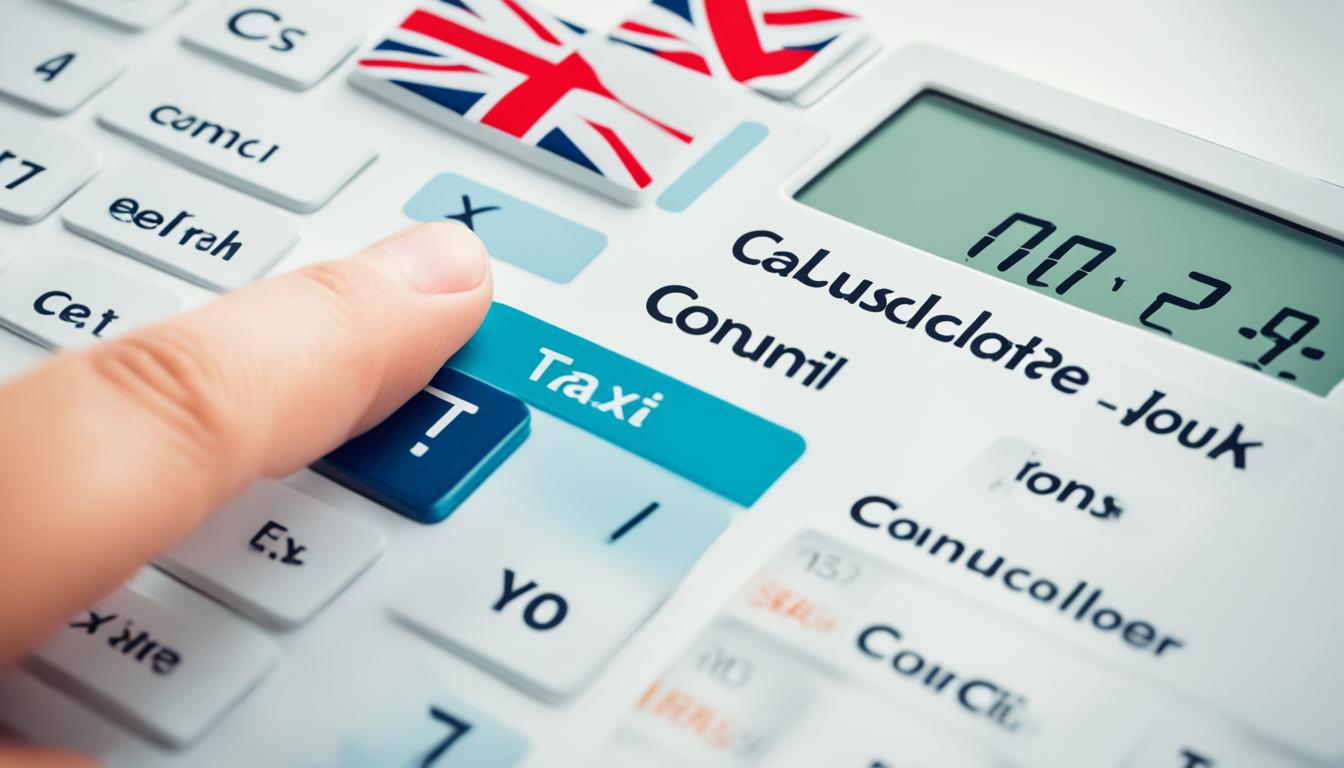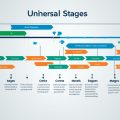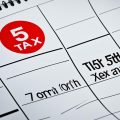Last Updated on: 6th May 2024, 05:18 am
Did you know that council tax is a significant expense for residents in the United Kingdom? In fact, it is estimated that the average household in the UK pays around £1,800 per year in council tax. Understanding how much you need to budget for this expense is crucial for maintaining financial stability. In this article, we will explore how council tax is calculated, the factors that can affect your council tax amount, and tips for lowering your council tax bill. So, let’s dive in and find out how much your council tax is!
What is Council Tax and Why Do You Need to Pay It?
Council Tax is a mandatory tax that residents in the UK have to pay to their local authority. It is calculated based on the value of their property and the council tax band assigned to it. The revenue collected from council tax is used to fund local services and infrastructure.
It is important to pay council tax on time to avoid penalties and legal consequences. Residents can now conveniently pay their council tax online, making the process more efficient.
By paying council tax, residents contribute to the maintenance and improvement of local amenities and services such as rubbish collection, street cleaning, public transport, police and fire services, and schools. These services are essential for the well-being and functionality of the community.
“Council tax helps to ensure that local authorities have the necessary funds to maintain and improve the quality of life in their areas. It allows for the provision of essential services and the development of infrastructure for the benefit of all residents.”
Paying council tax also ensures that the local authority has the funds to invest in various projects that enhance the local area, such as the development of parks and recreational facilities, road maintenance, and community programs.
With the convenience of online payment options, residents can easily make their council tax payments without the need for paper forms or visiting the local council office. This allows for a smoother and more accessible process, saving time and effort for both residents and the local authority.
Benefits of Paying Council Tax Online
Paying council tax online offers several benefits:
- Convenience: Online payment platforms allow residents to make council tax payments from the comfort of their own homes, at any time that is convenient for them.
- Efficiency: Online payments are processed quickly, reducing the administrative burden on both residents and the local authority.
- Security: Online payment platforms adopt stringent security measures, protecting residents’ personal and financial information.
- Accessibility: Online payment options are accessible to residents with disabilities or those who may have difficulty visiting the local council office.
Overall, paying council tax online streamlines the payment process, improves efficiency, and enhances the overall experience for residents.
Understanding Council Tax Bands and Costs
The council tax band assigned to a property determines the amount of council tax that needs to be paid. The bands range from A to H, with band A being the lowest and band H being the highest.
Each council tax band has a different cost associated with it. The exact cost of council tax for each band can vary between local authorities. To find out the council tax cost for your property, refer to your local council’s website or contact them directly.
Council tax bands are determined based on the value of the property as of April 1, 1991. The valuation of the property is done by the Valuation Office Agency (VOA), a government agency responsible for assessing property values for tax purposes.
| Council Tax Band | Annual Cost |
|---|---|
| Band A | £1,000 |
| Band B | £1,200 |
| Band C | £1,400 |
| Band D | £1,600 |
| Band E | £1,800 |
| Band F | £2,000 |
| Band G | £2,200 |
| Band H | £2,400 |
Understanding Council Tax Bands
When it comes to council tax in the UK, understanding the council tax bands is essential. Council tax bands are determined based on the valuation of your property as of April 1, 1991. These bands, ranging from A to H, determine the amount of council tax you are required to pay.
The council tax bands are assigned based on the value of your property at the specified date. Band A represents the lowest value, while band H represents the highest value. Each band corresponds to a specific range of property valuations.
“Council tax bands are determined based on the value of the property as of April 1, 1991. The bands range from A to H, with band A being the lowest and band H being the highest.”
The band assigned to your property has a direct impact on the amount of council tax you have to pay. Properties in higher bands will have a higher council tax bill compared to properties in lower bands.
The valuation of properties and the assignment of council tax bands are carried out by the Valuation Office Agency (VOA), a government agency responsible for assessing property values for tax purposes. The VOA uses various factors such as property size, location, and market conditions to determine the property’s value.
“The valuation of the property is done by the Valuation Office Agency (VOA), a government agency responsible for assessing property values for tax purposes.”
It’s important to keep in mind that council tax bands are reviewed periodically by the VOA. Changes in property valuations or other factors may result in a change of council tax band. If you believe that your property’s valuation band is incorrect, you can contact the VOA for a revaluation.
Understanding council tax bands can help you estimate your council tax liability and plan your finances accordingly. By knowing the band assigned to your property based on its valuation, you can have a clearer idea of the council tax amount you will need to pay.
| Council Tax Band | Description |
|---|---|
| Band A | Valuation up to £40,000 |
| Band B | Valuation £40,001 to £52,000 |
| Band C | Valuation £52,001 to £68,000 |
| Band D | Valuation £68,001 to £88,000 |
| Band E | Valuation £88,001 to £120,000 |
| Band F | Valuation £120,001 to £160,000 |
| Band G | Valuation £160,001 to £320,000 |
| Band H | Valuation over £320,000 |
Table: Council Tax Bands and Valuations
By familiarizing yourself with council tax bands and understanding how they are assigned, you can better manage your council tax payments and ensure compliance with your local authority’s requirements.

How to Calculate Your Council Tax?
Calculating your council tax is an essential step in managing your expenses. It allows you to budget effectively and ensure that you are prepared for this financial obligation. There are a few key steps involved in determining your council tax amount.
1. Gather the Necessary Information
Before you can calculate your council tax, you will need to gather some information. Firstly, determine the council tax band assigned to your property. This information can be found on the council tax valuation list or obtained from the Valuation Office Agency (VOA). You will also need to know the charge set by your local council for your specific band. This information is crucial in accurately calculating your council tax.
2. Utilize Council Tax Calculators
To simplify the calculation process, you can make use of online council tax calculators. These tools provide a quick and convenient way to determine your council tax amount based on your property’s band and the local council charge. By entering the relevant details into the calculator, you can instantly obtain an estimate of your council tax. This saves you time and ensures accuracy in your calculations.
3. Multiply the Council Tax Band by the Local Council’s Charge
The calculation itself is straightforward. Multiply your property’s council tax band by the charge set by your local council for that band. The result is your council tax amount for the year. Remember, this is just an estimate, and your actual council tax bill may vary slightly due to rounding or specific local factors.
4. Payment Schedule and Instalments
Once you have calculated your council tax amount, it is essential to understand the payment schedule and instalment options offered by your local authority. In most cases, council tax bills are divided into 10 or 12 monthly instalments. However, this can vary depending on your local council’s policies. Knowing the payment schedule allows you to plan your budget accordingly and avoid any unnecessary penalties or fees.
| Council Tax Band | Local Council Charge |
|---|---|
| Band A | £1,000 |
| Band B | £1,200 |
| Band C | £1,400 |
| Band D | £1,600 |
| Band E | £1,800 |
Here is a simplified example of how to calculate your council tax:
Property’s band: Band B
Local council charge for Band B: £1,200
Council tax calculation: Band B x £1,200 = £1,200
In this example, the council tax amount for a property in Band B with a local council charge of £1,200 would be £1,200.
By following these steps, you can effectively calculate your council tax and gain a clearer understanding of this financial obligation. Remember to consult reliable sources such as the VOA and utilize online council tax calculators to ensure accuracy in your calculations.

How Much is My Council Tax?
The amount of council tax that an individual has to pay depends on their property’s valuation band and the local council’s charge for that band. The council tax rates vary across different local authorities in the UK. The exact amount can be obtained by referring to the council tax valuation list or by contacting the local council. It is important to note that council tax rates can change from year to year, so it’s always a good idea to stay updated with the latest information.
Understanding how much your council tax is and how it is calculated is essential for managing your expenses effectively. By knowing the factors that affect your council tax amount and exploring options for lowering your bill, you can make informed decisions about your finances. It is also important to stay updated with any changes in council tax rates and to take advantage of any exemptions or discounts that you may be eligible for.
Check the table below for the average council tax rates in the UK based on property valuation bands:
| Valuation Band | Average Council Tax Rate |
|---|---|
| Band A | £1,168 |
| Band B | £1,364 |
| Band C | £1,561 |
| Band D | £1,757 |
| Band E | £2,150 |
| Band F | £2,544 |
| Band G | £2,937 |
| Band H | £3,524 |
Factors That Affect Your Council Tax Amount
When it comes to determining your council tax amount, several factors come into play. These factors include the valuation band of your property, the charge set by your local council for that specific band, and any applicable discounts or exemptions that you may be eligible for.
The valuation band of your property is a key determinant in calculating your council tax. Properties in the UK are assigned one of eight bands, ranging from A to H. Band A is the lowest, while band H is the highest. Each band corresponds to a specific value, which is used to determine the amount of council tax you owe.
The charge set by your local council for each band can vary, so it’s essential to check with your specific council to find out their rates. This charge is multiplied by the valuation band to calculate your council tax amount. Keep in mind that these rates can change from year to year, so it’s crucial to stay informed about any updates.
Additionally, there are potential discounts and exemptions that can lower your council tax amount. Eligibility for these discounts and exemptions varies depending on your circumstances. For example, if you are the sole occupant of your property, you may be entitled to a single person’s discount. Alternatively, some individuals, such as those with disabilities, may qualify for a reduction in their council tax. It’s worth checking with your local council to see if you meet the criteria for any applicable discounts or exemptions.
To find out how much council tax you owe, you can refer to your council tax bill, which provides a breakdown of the charges for your property. If you have any questions or need further clarification, don’t hesitate to contact your local council for assistance. They will be able to provide you with accurate information specific to your property and circumstances.
Understanding the factors that affect your council tax amount allows you to plan and budget effectively. By staying informed about the valuation band, charge rates, and potential discounts or exemptions, you can ensure that you are paying the correct amount and take advantage of any available cost-saving opportunities.
Summary Table: Council Tax Bands in the UK
| Band | Valuation Range* |
|---|---|
| A | Up to £40,000 |
| B | £40,001 – £52,000 |
| C | £52,001 – £68,000 |
| D | £68,001 – £88,000 |
| E | £88,001 – £120,000 |
| F | £120,001 – £160,000 |
| G | £160,001 – £320,000 |
| H | £320,001 and above |
*Valuation ranges are approximate and may vary slightly depending on the location.

Tips for Lowering Your Council Tax Bill
Residents in the UK can employ various strategies to lower their council tax bill. By taking advantage of discounts, exemptions, and alternative payment options, individuals can effectively manage their council tax expenses. Here are some tips to consider:
- Check for Discounts and Exemptions: Determine if you qualify for any discounts or exemptions that can reduce your council tax cost. One common discount is the single person’s discount, which offers a reduced rate for individuals living alone. Additionally, low-income individuals may be eligible for the council tax reduction scheme.
- Pay Over 10 Months: Some local authorities provide the option to pay council tax over 10 months instead of the standard 12 months. This can be beneficial for budgeting, as it allows for smaller monthly payments. Consider if this payment plan would work better for your financial situation.
- Consider a Lower Council Tax Band: Each property in the UK is assigned a council tax band ranging from A to H, with A being the cheapest and H being the highest. If you are open to moving, consider finding a property in a lower council tax band to reduce your overall expenses.
Implementing these strategies can help residents lower their council tax bill and have a better handle on their finances.

Example of Council Tax Band Comparison:
| Council Tax Band | Average Cost (per year) |
|---|---|
| Band A | £1,000 |
| Band B | £1,200 |
| Band C | £1,400 |
| Band D | £1,600 |
| Band E | £1,800 |
Table: This table provides an example of the average annual council tax cost based on different council tax bands. Please note that these figures are for illustrative purposes only and actual costs may vary.
Exemptions and Discounts on Council Tax
When it comes to council tax, there are certain exemptions and discounts that can provide financial relief for eligible individuals. Full-time students are one such group that may benefit from a council tax exemption, meaning they are not required to pay council tax at all. This exemption is designed to support students who are focused on their studies and may have limited financial resources.
“As a full-time student, I am grateful for the council tax exemption as it helps me allocate my limited funds towards my education and living expenses without the additional burden of council tax.” – Amelia Turner, Student
In addition to full-time students, disabled people may also be eligible for a discount on their council tax bill. This discount recognizes the additional challenges that disabled individuals may face and aims to alleviate some of the financial burdens they may experience.
Eligibility Criteria and Requirements
It is important to check with your local council to understand the specific eligibility criteria and requirements for these exemptions and discounts. Each council may have different guidelines and processes in place. For students, you may need to provide proof of your enrollment in a full-time course, such as a letter from your educational institution. For disabled individuals, you may need to provide documentation that verifies your disability status.
Maximizing Your Benefits
To ensure that you are making the most of the exemptions and discounts available, it is crucial to stay informed and proactive. Keep track of any changes in council tax policies and rates that may impact your eligibility. Regularly communicate with your local council to update them on any changes in your circumstances that may affect your exemptions or discounts.
Remember, exemptions and discounts on council tax can provide significant financial relief, so it is worth exploring your options and understanding what you may be eligible for. Take advantage of these opportunities to help manage your expenses effectively.
Conclusion
Understanding how much your council tax is and how it is calculated is essential for managing your expenses effectively. By knowing the factors that affect your council tax amount and exploring options for lowering your bill, you can make informed decisions about your finances.
Calculating your council tax is as simple as multiplying the council tax band by the local council’s charge for that band. You can use online council tax calculators or refer to the council tax valuation list to get an accurate estimate.
Stay updated with any changes in council tax rates by contacting your local council or checking their website. Additionally, take advantage of any exemptions or discounts that you may be eligible for, such as discounts for full-time students or disabled individuals.




















No Comments
Leave a comment Cancel